Physical Rehabilitation
 Physical Rehabilitation
Physical Rehabilitation 
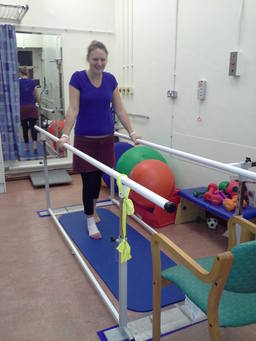
Getting walking for me didn't really start for many months. The reason being my foot and leg were I were too sensitive to do anything very physical with. I could have a flare-up from going over cobbles in my wheelchair, the vibrations being too much, so to start with intense physical rehabilitation was not going to be benificial until this had stabalised a little. This didn't mean I wasn't doing anything, in fact the complete opposite. I focussed on desensitisation, the introduction of touch and reconnecting with my leg ( I talk all about these on the Reconnecting with your body part pages of this site). All the while learning how to prevent flare ups whilst increasing activity and stimulation to it. I also worked a lot on gradually getting my foot flat on the floor (whilst sat down) and gradually progressing to standing and slowly putting more weight through my leg. I have talked more about this in Pacing and Graded exposure pages of this site.
It was actually at Bath (The Royal National Hospital for Rheumatic Disease) nearly a year and a half later after my original diagnosis that I started moving my foot and leg and getting able to accept more weight. By this point I could bare my foot on the floor for a minute or so and could stand putting some weight through my foot. With the physiotherapist at Bath I used the Wii Fit balance board, to my complete surprise it told me I was putting 71% of weight through my good leg and only 29% of my weight through my poorly leg. In my mind the pain and feedback from my CRPS effected leg was so intense I would of put money on me puuting more than average weight through my poorly side. What is interesting about this exercise was how my mind had got so confused, thinking that even though I was putting less than a third of my body weight through my leg it felt like so much more. This was a great visible aid, and a place to work from to get back to 50/50 again. Truthfully the physical rehabilitation is painful and challenging, my leg would soon be a vicious shade of red and literally on fire.It is important to know that although it hurts that the pain is not causing any damage, it is the misconception of the brain, over reacting to safe activities. Remember throughout the rehab to pace yourself, never try and push through it, but gently build up.
At bath the great physiotherapist and occupational therapist gave great one-one sessions, helping building confidence and showing a wonderful degree of patience, understanding and care. For me I found using the hydrotherapy pool the most useful and after their introduction during my stay I continued to use the local pool 4-5 times a week to work on my rehabilitation. When I explained that I was using it for rehab purposes they gave me concessionary admittance which really helped, so always worth asking.
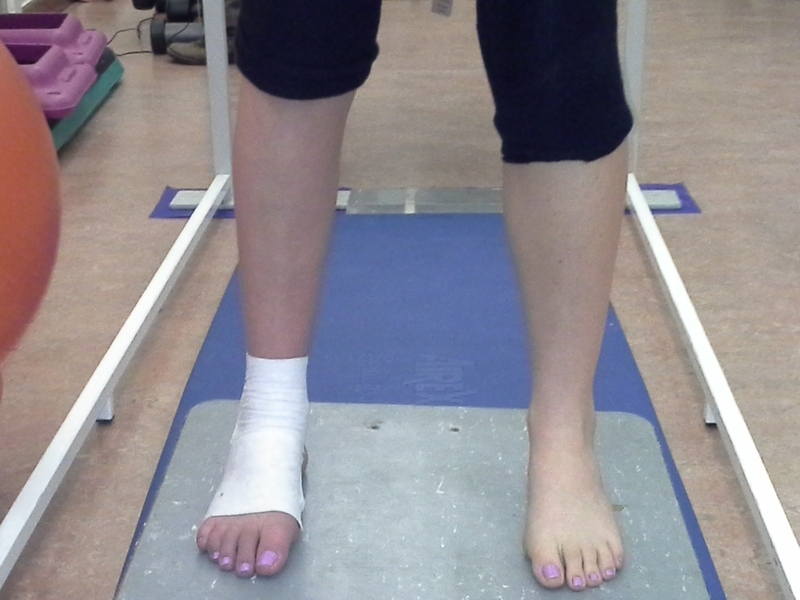 I would be lying if I said rehab wasn't challenging and takes a lot of mental power and determination and initially I could only stay in the pool 10-15 mins. The first step was getting my foot in the water, ouch, but after a minute or so this was ok and after a couple of weeks later this was very little issue. We then worked on getting my foot flat on the floor and slowly built up transferring weight through it. After two weeks in Bath Royal Mineral Hospital CRPS care center I was completing 30 mins in the pool everyday, I left being able to walk the 10m pool length at chest height. I continued this work at my local pool and gradually getting lower and lower in the water, till I was belly button height. I increased the range of movements, walking zigzags, backwards, up on toes, knee lifts, bum kicks, and working on balance and proprioception (where the limb feels in space). It is great to do exersizes with your eyes closed, so your brain has to sense where your limb is and not just see it.
I would be lying if I said rehab wasn't challenging and takes a lot of mental power and determination and initially I could only stay in the pool 10-15 mins. The first step was getting my foot in the water, ouch, but after a minute or so this was ok and after a couple of weeks later this was very little issue. We then worked on getting my foot flat on the floor and slowly built up transferring weight through it. After two weeks in Bath Royal Mineral Hospital CRPS care center I was completing 30 mins in the pool everyday, I left being able to walk the 10m pool length at chest height. I continued this work at my local pool and gradually getting lower and lower in the water, till I was belly button height. I increased the range of movements, walking zigzags, backwards, up on toes, knee lifts, bum kicks, and working on balance and proprioception (where the limb feels in space). It is great to do exersizes with your eyes closed, so your brain has to sense where your limb is and not just see it.
Throughout all exercises and rehab sessions it was very important to bare in mind my threshold point and preventing flare-ups at all cost, well at least trying to. Whilst gradually re-introducing movements and exposure. Whats great about the pool is that the sensation of the water on your whole body makes it easier to sense your limb in space, so when you focus on it you can feel all of it again, a true representation of the feel of the water. Patience and determination I would say are the two key words when it comes to rehabilitation.
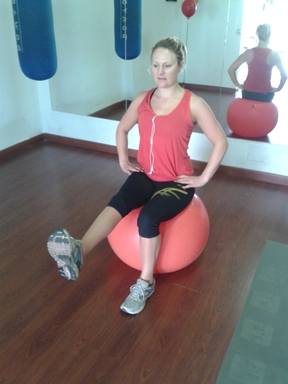
After a few months I actually started swimming (anyone who knows me, will understand when I say that this was INCREDIBLE!! After so long of being deprived of exercise). Just a couple of lengths at first but this too increased to 10 mins, then 30 mins and now I can spend an hour+ in the pool doing a combination of swimming and rehab with no real increase in my pain level. I will point out here that after all rehab and pool sessions I found that a cold shower was really helpful, even if not very pleasant. If, which was common I slightly over did it my foot would be swelling and reddening as I left the pool. By having a cold shower, doing some deep breathing exersizes and calming the nervous system, I could dramatically reduce the pain price of the rehab session. I would also spend the time in the shower and whilst getting dresses to pay particulalr attenion to my feet and legs. massage with soap, then rub carefully dry, then massage with moisturiser. This attention helped reduce the reddening and seem to calm the response down.
Also at Bath we worked in the gym, doing exercises on land, this was harder without the support of the water, but we started sitting down, so just lifting my toes up and down, and or raising up on my toes. Lots of little exercises I then integrated into everyday activities sat on the loo, at the doctors surgery, before dinner, ect. Familiarising my leg with little movements, teaching it and my brain that these are ok. But remember start small with a comfortable level, for example just five repeats, once you can do these a number of times without increasing your pain too much increase it gradually and build up gently.
Yoga is excellent and great for everyone as it is uncompetitive and everyone can work at their own level. I started doing yoga sat down on a chair adapting the exersizes to what I could do and if I couldn't complete an exersize I would rest and embrace the peaceful environment. It is also a great time to be very mindful and engage with your body part. I spent hours in the evenings sat stretching (and sprawling) on the floor of my living room, using the time to breathe into the stretch and focus on different parts of my body. Concentrating on and breathing deep into the on different areas and muscles that are stretching really helped me cope when the pain was bad. There are lots of different typ
es of yoga and can be done in your own home. I really like Dru Yoga and Meditation and you can get a free trial or subscribe online. It gives a range of yoga and you can pick your session length and stlye. Or if you may find classes locally. But a great free alternative is You tube. It is full of short yoga sessions to try out. Hatha and Iyengar yoga tend to be gentle but search for 'Gentle yoga' or 'Yoga for pain relief' and you will be spoilt for choice. Remember never do more than what is comfortable. Focus on your breathing and body and Reeeelaaaxxx!
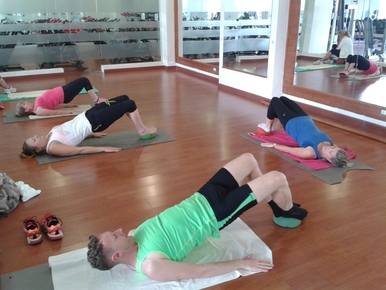
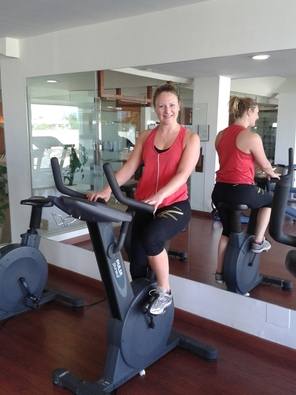
Over the last 8 months I have also gradually built up on the static bike, from just one minute initially to 35 mins now, and at Easter I cycled half a mile outside. It was liberating and wonderful, and worth every single effort to get there. I have also gradually restarted Pilates and work on my core and posture, which is important for strengthening and preventing other postural problems. I have to adapt lots of things to make them ankle friendly but it is surprising how willing people are to help if you ask and being part of classes is great.
Exersize of any kind whether that is a gentle walk to the end of the garden, ten sit ups, a gentle swim, dancing, yoga or pilates is great for pain relief and relieving low mood too. When you exercise, your body releases chemicals called endorphins. These endorphins interact with the receptors in your brain that reduce your perception of pain. These brilliant chemicals in teh brain also trigger a positive feeling in the body, similar to that of morphine. For example, the feeling that follows a run or workout is often described as "euphoric." That feeling, known as a "runner's high," can be accompanied by a positive and energising outlook on life.